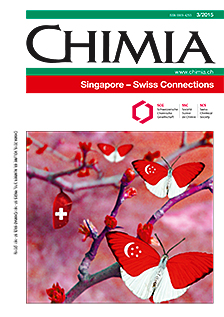Modelling Water: A Lifetime Enigma
DOI:
https://doi.org/10.2533/chimia.2015.104Keywords:
Force field, Molecular dynamics, Polarizable, Potential energy surface, Water modelsAbstract
The first attempt to describe water dates back to 1933 with the Bernal–Fowler model and it would take another forty years before the first computer simulation of liquid water by Barker and Watts in 1969. Since then, over a hundred different water models have been proposed. Despite being widely studied, water remains poorly understood. Examining the evolution of water models, we identified three distinct philosophies in water modelling, namely the employment of effective point charges in pioneering empirical models, the incorporation of polarization to describe many-body inductive effects and the extensive use of ab initio calculations to describe short-range effects. In doing so, we can appraise the current understanding of water and identify attributes that a water model should possess to capture the intricate interactions between water molecules.Downloads
Published
2015-03-25
Issue
Section
Scientific Articles
License
Copyright (c) 2015 Swiss Chemical Society

This work is licensed under a Creative Commons Attribution-NonCommercial 4.0 International License.
How to Cite
[1]
J. F. Ouyang, R. P. A. Bettens, Chimia 2015, 69, 104, DOI: 10.2533/chimia.2015.104.







